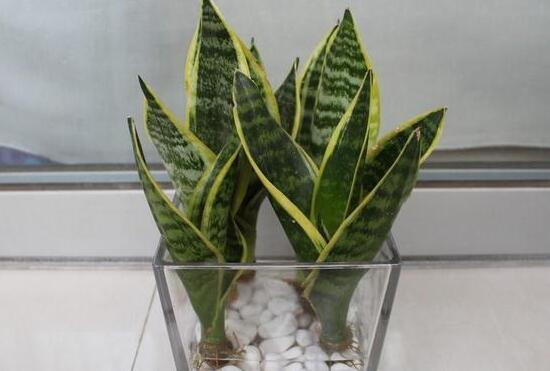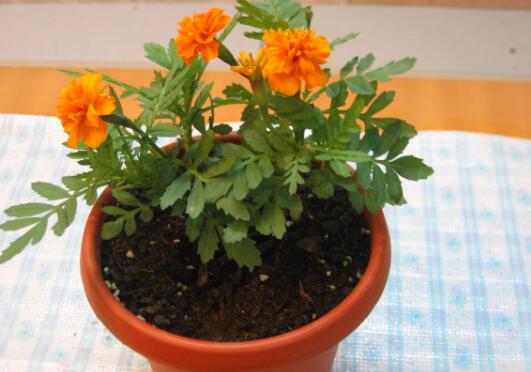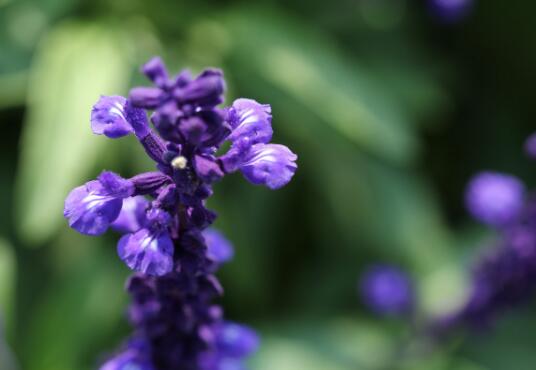How to propagate Phnom Penh tiger skin orchid, the propagation method of Phnom Penh tiger skin orchid (cutting / ramet)
As a variety of tiger skin orchid, Phnom Penh tiger skin orchid has many functions, it not only looks good, but also can purify the air and prevent radiation, but also can be used medicinally to treat diseases. It is a favorite plant among flower friends. With the increasing number of people raising Phnom Penh tiger skin orchid, many people want to know the breeding method of Phnom Penh tiger skin orchid, and then get a few more pots. So, how does Phnom Penh tiger Pilan breed? Today, the editor will solve this problem for everyone.
1. How to propagate, cuttage / ramet in Phnom Penh?

As a novice in breeding, you can know the breeding method of Phnom Penh tiger skin orchid, but if you are an old hand, you should also master the breeding method of Phnom Penh tiger skin orchid, which can not only enrich yourself, but also increase the fun of breeding. As for how Phnom Penh tiger skin orchid reproduction, there are two main methods: ramet and cutting, and then focus on the introduction of Phnom Penh tiger skin orchid leaf cutting method.
2. Two propagation methods of Phnom Penh tiger skin orchid (1) how to cut Phnom Penh tiger skin orchid
In indoor reproduction, the common method used by flower friends is cutting, most of which are stem cuttings and succulent plants are leaf cuttings. However, with the exception of Phnom Penh tiger skin orchid, although it is not a succulent plant, it is also often inserted with leaves when it is propagated. Next, the editor will bring you the method of inserting Pilan leaves in Phnom Penh.
Phnom Penh tiger skin orchid leaf insert
1. Cuttings selection
If you want to insert leaves, you have to choose leaves. First of all, the flower friends remove the Phnom Penh tiger skin orchid from the flowerpot, then clean up the soil, and then cut off the outer leaves. Choose 2-3 leaves with a length of about 15 cm as cuttings.
Treatment of cuttings: after the cuttings are selected, they should be treated accordingly. Because the leaves of Phnom Penh tiger skin orchid are too thick, in order to prevent the plant from being infected by bacteria, flower friends apply plant ash or furnace ash to the incisions of the leaves.
2. Leaf insertion starts.
Wipe the cuttings clean, then cut the upper part flat, then invert the leaves and insert them down into the newly prepared flowerpot soil with a leaf sheath. Insert it at a depth of 3-5, then control the room temperature between 18 and 22 ℃. After proper watering, place the plant in a cool environment. About half a year, Phnom Penh Tiger Pilan will sprout out leaves, and the leaves are left with Phnom Penh.
3. Points for attention
In the upper leaf insertion, we must pay attention to: the leaves should be inserted backwards, so that the newly sprouted tiger Pilan will bring Phnom Penh. On the contrary, if you insert the words, the newly sprouted tiger Pilan does not take Phnom Penh, which is one of the reasons why many flower friends Phnom Penh Tiger Pilan Phnom Penh has disappeared.
(2) the ramet propagation of Phnom Penh.
In addition to cutting, the propagation method of Phnom Penh tiger skin orchid can also be used to separate plants, which is generally combined with changing pots. Specific operation: when changing pots for Phnom Penh tiger skin orchid, separate the new and old plants, and plant the old roots in another pot or on the ground, so that you can easily get multiple pots of Phnom Penh tiger skin orchid.
Generally speaking, it is not difficult for Phnom Penh to reproduce. Cuttings and ramets can be successful, but when cutting leaves, in order not to let Phnom Penh disappear, we must pay attention to cutting upside down! Of course, the method is dead, people are alive, we can according to the actual situation, choose the method to breed. With regard to the breeding method of Phnom Penh Tiger Pilan, the editor has introduced this, hoping to give you some help.
[Tiger Pilan ramet] how does Tiger Pilan propagate?
Tiger skin orchid, also known as tiger tail orchid, is a kind of foliage plant with strong vitality and root hair plant. Tiger Pilan is lax on the environment and easy to maintain, and its biggest feature is that it can purify the air and has a strong ability to absorb formaldehyde. A few pots of tiger orchid can absorb indoor harmful gases in the newly renovated home. Generally speaking, only a few plants need to be planted, and a full pot will be harvested after a year. Then how does Hu Pilan propagate in separate plants?
The method of ramet propagation of Polygonum cuspidatum
Cutting and ramet are the most commonly used propagation methods. Compared with leaf cutting propagation, the biggest advantage of split propagation is that it can keep Phnom Penh's Phnom Penh, which is generally combined with changing pots in spring.
In the ramet operation method, the overgrown leaf clusters are cut into several clumps, each of which has not only leaves, but also a section of rhizome and sucking buds, which can be planted in pots. When planting, first put part of the soil under the basin, and then plant it from one side of the basin and plant it evenly in the basin.
Points for attention: take the plant out of the basin and separate the daughter plant from the mother plant with a sharp knife. Try to avoid damaging the root system and let the separated sub-plant bring more roots as much as possible. After separation, the seeds should be placed in a dark place indoors to prevent rain and control watering, so as not to cause the rot of the incision, and wait for the new leaves to grow before they can be transferred to normal maintenance.
Tip: Tiger Pilan is a root plant, generally speaking, only a few plants need to be planted, and a full basin will be harvested after a year. When planting, you should first put part of the soil under the basin, then plant it from one side of the basin and plant it evenly in the basin. Generally speaking, Tiger Pilan has to change its pot or propagate it every two years.
How does tiger skin orchid propagate, matters needing attention
Tiger skin orchid, also known as tiger tail orchid, is a kind of strong vitality foliage plant, is a root hair plant, generally speaking, only need to plant a few plants, a year later, can harvest a full pot. Then how does Hu Pilan propagate in separate plants? What matters should be paid attention to in the ramets of Tiger Pilan?
How does tiger skin orchid propagate in separate plants
Cutting and ramet are the most commonly used propagation methods. Compared with leaf cutting propagation, the biggest advantage of split propagation is that it can keep Phnom Penh's Phnom Penh, which is generally combined with changing pots in spring.
Ramet operation method:
The overgrown foliage is cut into several clumps, each with leaves, but also a section of rhizome and sucking buds, which can be planted in pots. When planting, first put part of the soil under the basin, and then plant it from one side of the basin and plant it evenly in the basin.
Matters needing attention of the ramets of Tiger Pilan
Take the plant out of the basin and separate the daughter plant from the mother plant with a sharp knife. Try to avoid damaging the root system and let the separated sub-plant carry as many roots as possible. After separation, the seeds should be placed in a dark place indoors to prevent rain and control watering, so as not to cause the rot of the incision, and wait for the new leaves to grow before they can be transferred to normal maintenance.
Tiger Pilan is lax on the environment and easy to maintain, and its biggest feature is that it can purify the air and has a strong ability to absorb formaldehyde. A few pots of tiger orchid can absorb indoor harmful gases in the newly renovated home.
- Prev

When to sow malachite grass, the planting method of malachite grass / can be sown in four seasons
In the breeding methods of peacock grass, sowing and reproduction is a more commonly used method, this method has been tested by countless people, there is still a high survival rate, but if you want to sow and grow, there are many points that need to be paid attention to. About when the malachite will be sown? What is the planting method of peacock grass?
- Next

How to reproduce sage? the reproduction method / survival rate of sage is as high as 95%.
Sage is a kind of flower plant with high ornamental value, which can be seen in many areas of our country, but with more and more people raising sage, people are more concerned about its reproduction. About how sage propagates? What are the propagation methods of sage
Related
- Fuxing push coffee new agricultural production and marketing class: lack of small-scale processing plants
- Jujube rice field leisure farm deep ploughing Yilan for five years to create a space for organic food and play
- Nongyu Farm-A trial of organic papaya for brave women with advanced technology
- Four points for attention in the prevention and control of diseases and insect pests of edible fungi
- How to add nutrient solution to Edible Fungi
- Is there any good way to control edible fungus mites?
- Open Inoculation Technology of Edible Fungi
- Is there any clever way to use fertilizer for edible fungus in winter?
- What agents are used to kill the pathogens of edible fungi in the mushroom shed?
- Rapid drying of Edible Fungi

